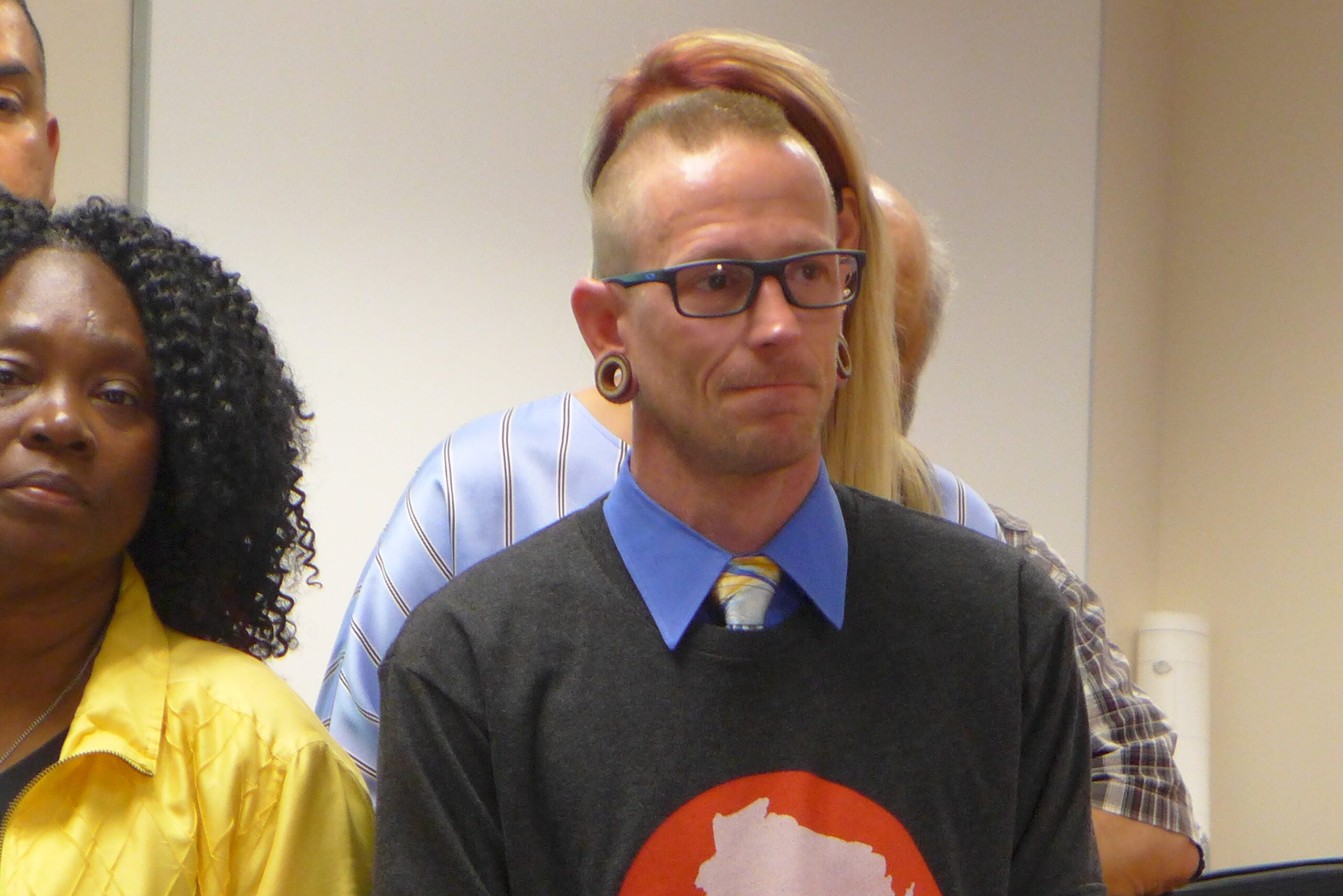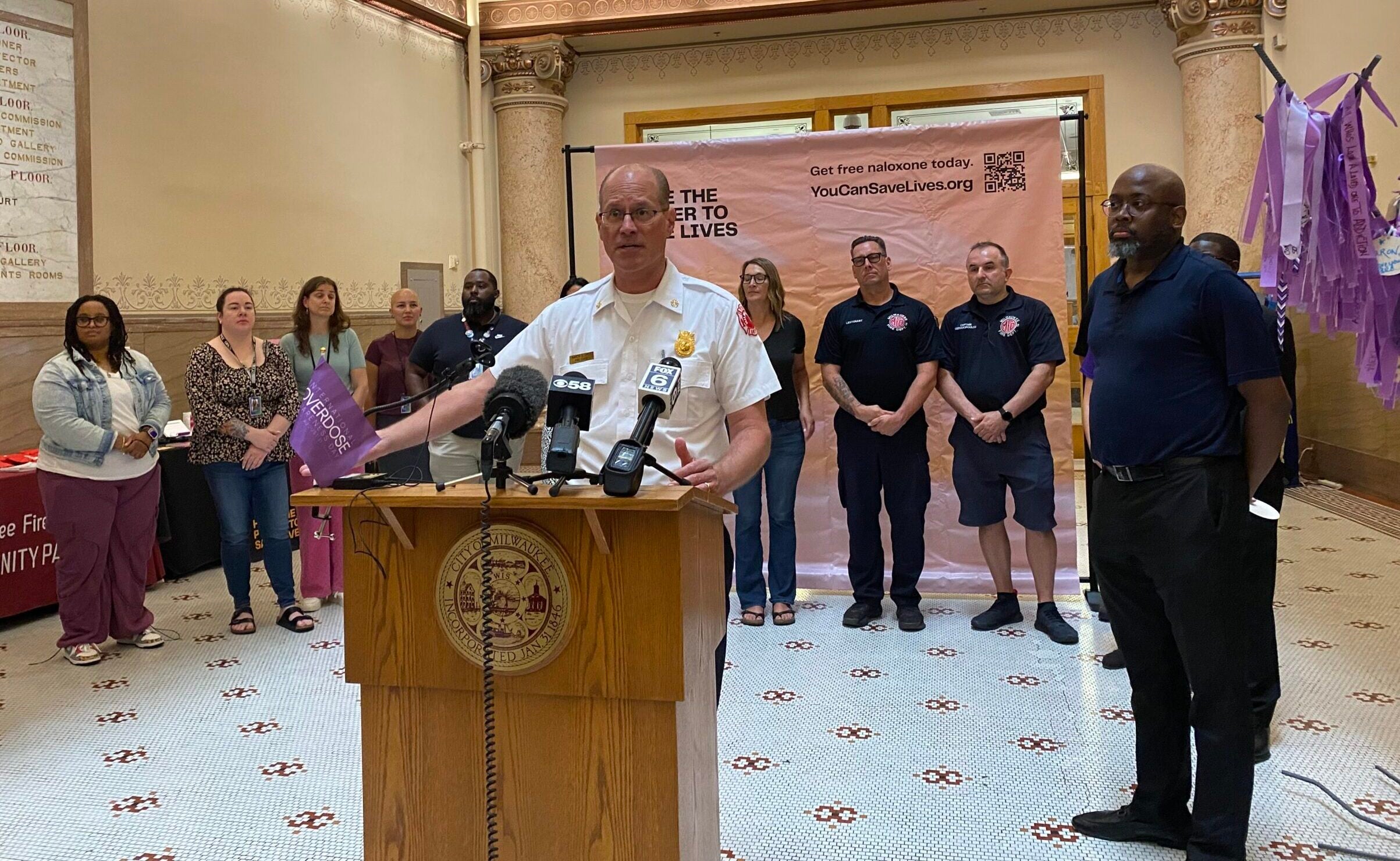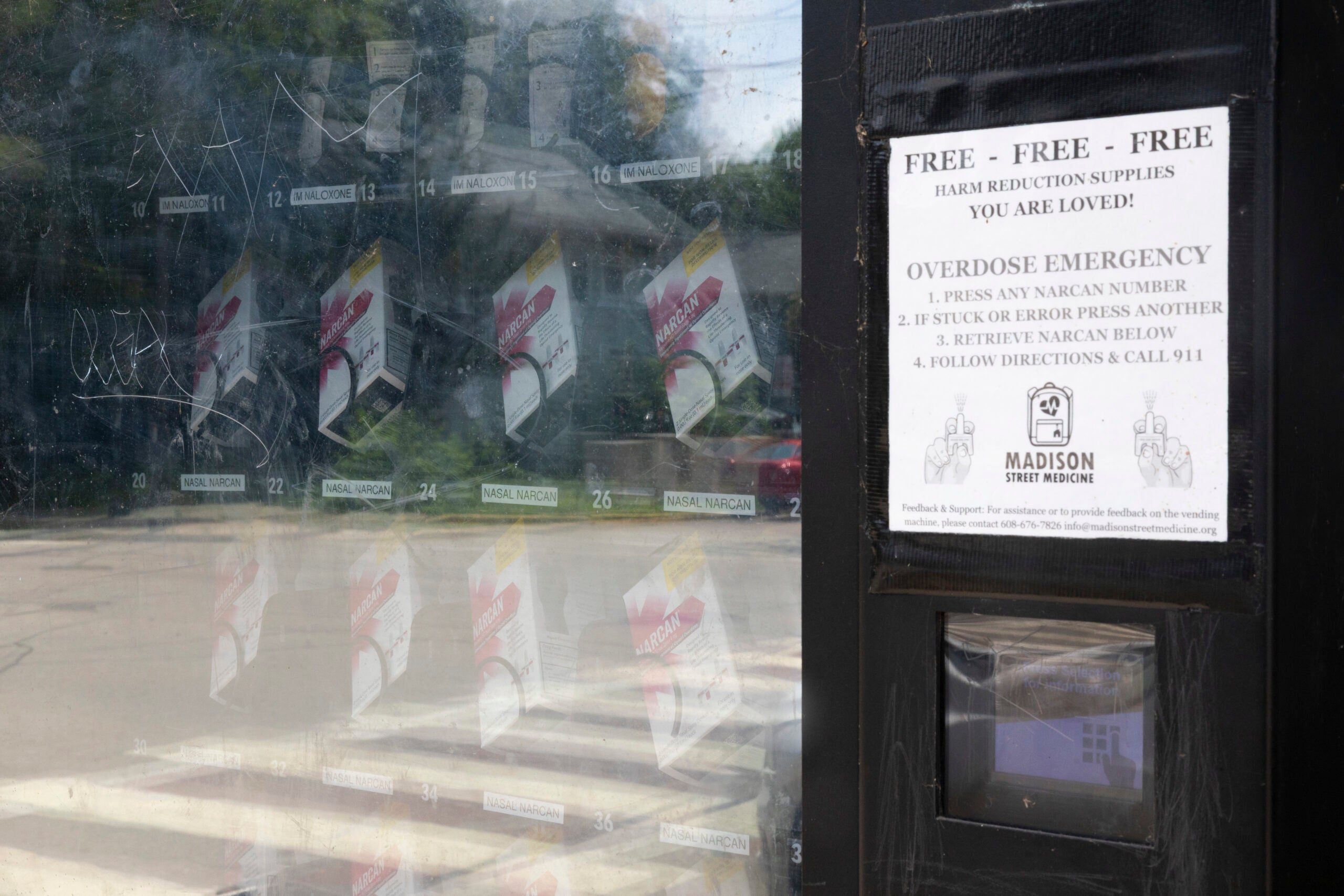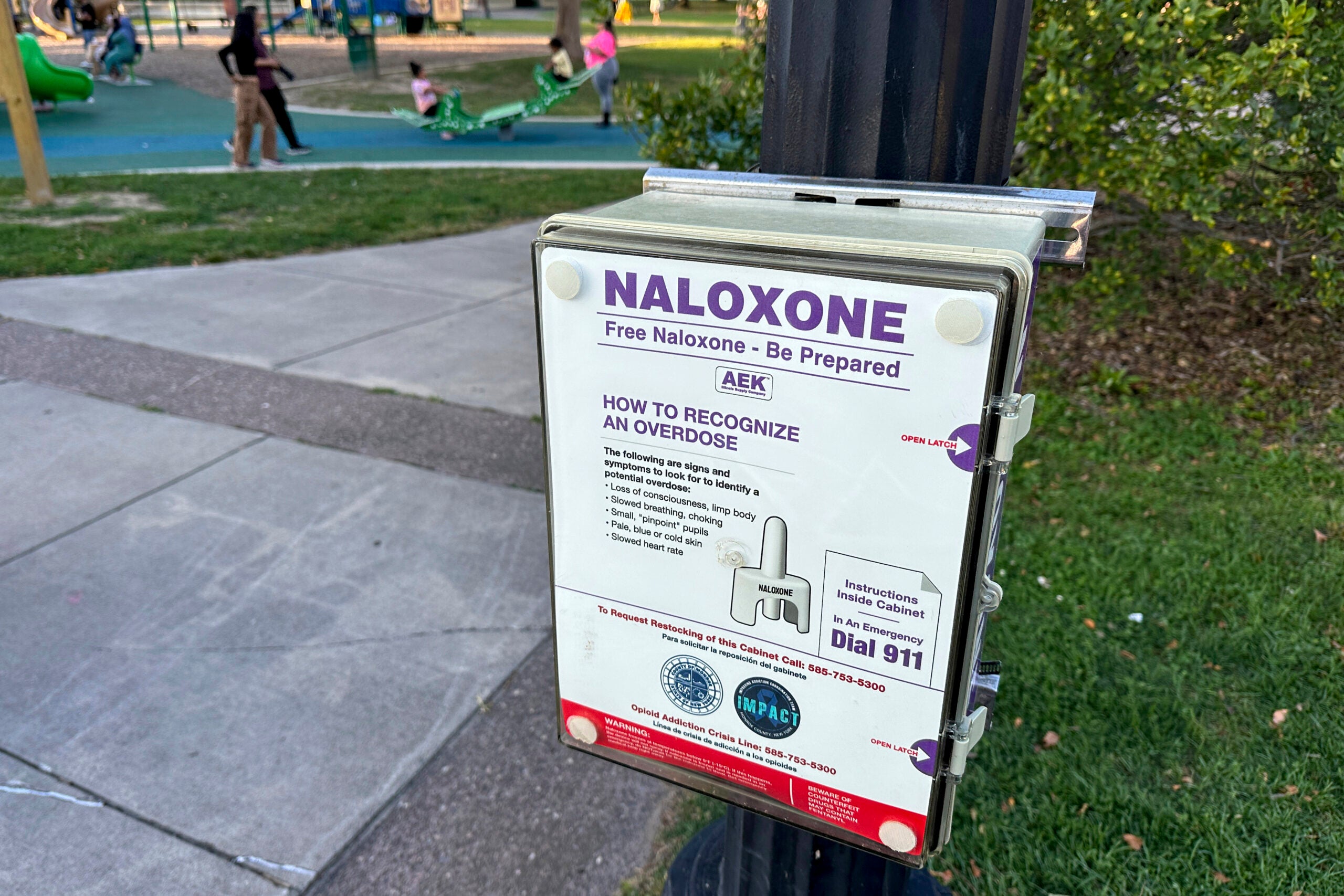Dane County is expanding a program that tries to get addicts into treatment after they end up in jail or the emergency room.
In 2016, the county started a program with SSM St. Mary’s Hospital in Madison to connect opioid users who come to the ER with state-certified recovery coaches. That model is now being used in most county hospitals and starting this summer, area police departments and EMS agencies will also begin making referrals to recovery coaches.
“With this expansion we will be the only county in the nation with this comprehensive of an approach to connect people in need to the help they need,” said Dane County Executive Joe Parisi at a press event Thursday marking National EMS Week.
News with a little more humanity
WPR’s “Wisconsin Today” newsletter keeps you connected to the state you love without feeling overwhelmed. No paywall. No agenda. No corporate filter.
The recovery coach program is a partnership between Safe Communities, Dane County and area hospitals. The coaches are former users who help connect addicts to available treatment options and determine if there’s insurance or another way to pay for it.
“We are incredibly excited to expand these services. Peer support works. Our evidence continues to show that it works,” said Skye Tikkanen from Safe Communities. “We are very targeted in our responses. We try to get people the support they need at those crucial moments.”
Intervention can occur when a drug user is brought to the ER after overdosing, having pregnancy complications, is suicidal or has a run in with the law.
“I think the thing that has been increasingly and painfully clear over the last 10 years is that this opioid epidemic is not going away,” said Dr. Michael Lohmeier, medical director of Dane County EMS and an emergency room doctor at UW Health.
In 2016, 85 people died in Dane County from opioids. Others were revived using Narcan; EMS administered 701 doses of the overdose reversal medication. The following year the doses of Narcan used by Dane County EMS jumped to 901.
“We had four overdoses that happened just yesterday, ranging in age from 20 to mid-60s. This is not a young person’s disease, this is not an old person’s disease. This doesn’t care about socioeconomic status; it doesn’t care where you come from or where you’re going. It hits everybody equally,” said Lohmeier.
Last year, 43 people in Dane County were referred for drug treatment under the recovery program and of those 90 percent started the process. It’s not known how many completed treatment.
Much of the drug epidemic has been blamed on misuse of prescription painkillers. The state has a database prescribers are required to check, and doses of opioids have gone down statewide.
“I think it’s probably not so much not giving opioids to the person who may need them; it’s reducing the number they get sent home with,” said Lohmeier.
For instance he said the default prescription for painkillers used to be 30 pills. If the patient didn’t use them all there was a chance they could be diverted.
But while progress is being made in some areas, health officials in Dane County and across the state are still working to stop what is still a growing crisis.
Wisconsin Public Radio, © Copyright 2026, Board of Regents of the University of Wisconsin System and Wisconsin Educational Communications Board.




